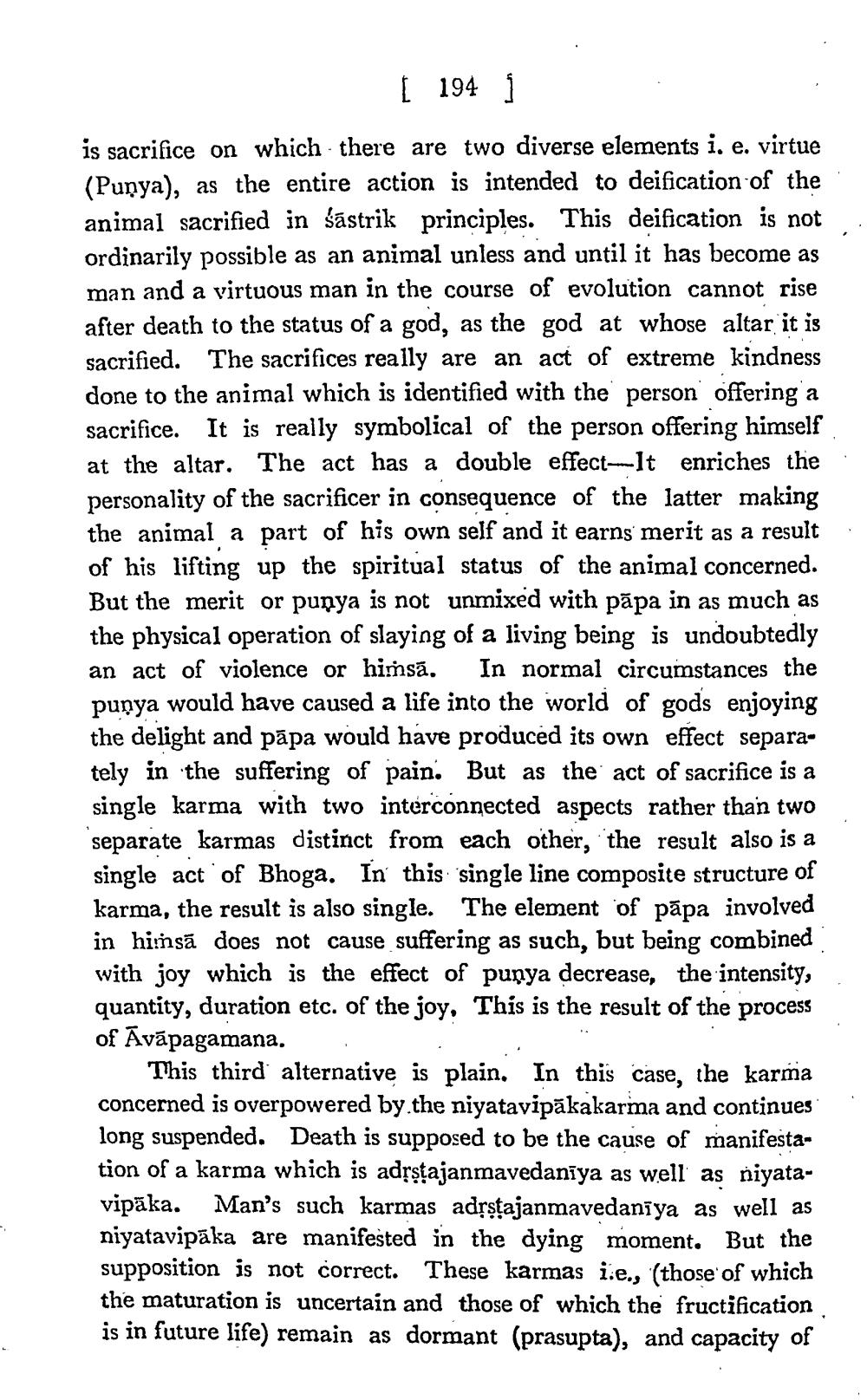________________
[ 194
1
is sacrifice on which there are two diverse elements i. e. virtue (Punya), as the entire action is intended to deification of the animal sacrified in śástrik principles. This deification is not ordinarily possible as an animal unless and until it has become as man and a virtuous man in the course of evolution cannot rise after death to the status of a god, as the god at whose altar it is sacrified. The sacrifices really are an act of extreme kindness done to the animal which is identified with the person offering a sacrifice. It is really symbolical of the person offering himself at the altar. The act has a double effect-It enriches the personality of the sacrificer in consequence of the latter making the animal a part of his own self and it earns merit as a result of his lifting up the spiritual status of the animal concerned. But the merit or punya is not unmixed with păpa in as much as the physical operation of slaying of a living being is undoubtedly an act of violence or himsã. In normal circumstances the punya would have caused a life into the world of gods enjoying the delight and pāpa would have produced its own effect separately in the suffering of pain. But as the act of sacrifice is a single karma with two interconnected aspects rather than two separate karmas distinct from each other, the result also is a single act of Bhoga. In this single line composite structure of karma, the result is also single. The element of pāpa involved in hi'nsā does not cause suffering as such, but being combined with joy which is the effect of punya decrease, the intensity, quantity, duration etc. of the joy, This is the result of the process of Āvāpagamana.
This third alternative is plain. In this case, the karma concerned is overpowered by the niyatavipākakarma and continues long suspended. Death is supposed to be the cause of manifestation of a karma which is adęstajanmavedaniya as well as niyatavipāka. Man's such karmas adsstajanmavedanīya as well as niyatavipāka are manifested in the dying moment. But the supposition is not correct. These karmas iie., (those of which the maturation is uncertain and those of which the fructification is in future life) remain as dormant (prasupta), and capacity of




